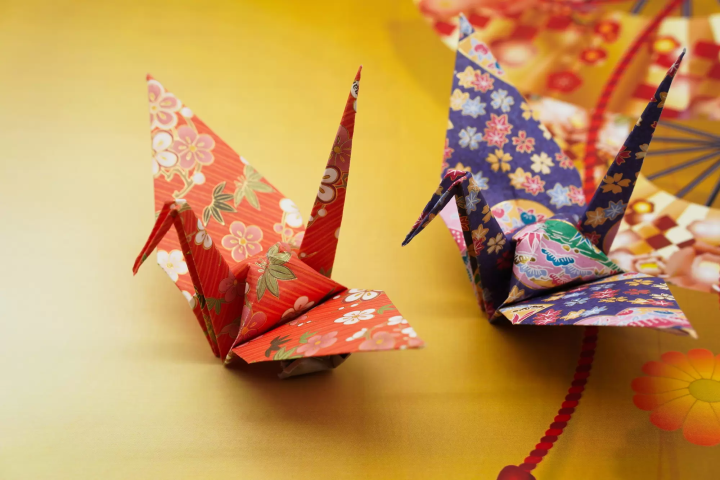Fundoshi: The History and Recent Trends in Japanese Traditional Underwear

Fundoshi are the traditional type of underwear worn in Japan, seen often at festivals and cultural events. In this article, learn the history, how to wear fundoshi, and learn about modern fashion trends for fundoshi.
Fundoshi - Japan's Traditional Underwear

Have you heard of fundoshi before?
Fundoshi are the traditional Japanese underwear made by wrapping a long cloth about the body. There are various ways in which it can be wrapped and knotted, and they can be made from many different types of material too.
Although they aren't as easy to wear as Western-style undergarments, fundoshi are thought to be better for your health and more comfortable overall.
In this article, we introduce what fundoshi are, their history, how to wear one, and recent fashoion trends.

A scene featuring sumo wrestlers from Hokusai's Manga, by Katsushika Hokusai.
The fundoshi was a daily part of the lives of the Japanese about 100-150 years ago.
During the Edo period, carpenters, fishmongers, craftsmen and merchants all work fundoshi as part of their work clothes.
However, the fundoshi lost its charm after the Second World War, as it was seen as part of the militarism of the nation, and its use rapidly declined in the years following the war.
At present, you're most likely to see fundoshi if you attend a festival or go watch a sumo match. At festivals, many men participating in the festival wear happi jackets on their upper body, and a fundoshi below, while the mawashi worn by sumo wrestlers are another type of fundoshi as well.
Reference: The Japan Fundoshi Association About fundoshi
How to Wear Fundoshi and Modern Fashion Trends
As shown in the picture above, it is simple to put on fundoshi. First, take the fabric to go around your waist and tie it securely. Then, take the larger fabric through your legs to cover your lower half, and pull it up through the waistband. The remaining fabric goes over the front.
Although the standard in the past, it's not uncommon for fundoshi to bring about images of being "difficult", "stiff", "uncomfortable" or "old man" in the present. Until the Second World War, they were a natural choice and rooted in the daily lives of the Japanese, but they quickly disappeared post-war, and slowly faded away.
The Japan Fundoshi Association seeks to bring back our predecessors love for this type of undergarment, to share the appeals of the fundoshi with modern generations, and to reintroduce the fundoshi as a daily garment as well.
They are working hard to share the culture and effectiveness of the fundoshi via various media outlets. Furthermore, by rediscovering and sharing the value of the fundoshi, they have also succeeded in making the younger generations aware of the fundoshi itself, as they might not have been aware of it otherwise, and have shared this knowledge with people overseas too.
The Fashionable Fundoshi Brand SHAREFUN®

SHAREFUN® is a brand launched by the president of the Japan Fundoshi Association, Mr. Keiji Nakagawa.
SHAREFUN is a compound word combining the Japanese for 'fashionable' (oshare), with the first part of 'fundoshi', and has the extra meaning in English of "share fun(doshi)".
The Appeal of SHAREFUN®

As one of the activities undertaken by the Japan Fundoshi Association, there has been a steady increase in the number of people who appreciate fundoshi. But, what are the charms of SHAREFUN that seem to be drawing the Japanese back to this traditional undergarment?
More Comfortable than Underwear
SHAREFUN® are not made with any elastics, which means that they will not squeeze or constrict your waist or groin area. As such, they do not constrict blood flow or compress the lymph nodes, so they can safely be worn to bed and will not cause any numbness or swelling in the extremities.
They are also breathable, which means that wearers are less likely to experience any rashes or itching from the fabric, and have the added effect of preventing any skin darkening that may be caused by constrictive fabrics rubbing against the skin for a long period of time. Because of this, the number of people who wear fundoshi not only as room wear but while sleeping has been increasing as well.
SHAREFUN® are ideal for those who struggle with constriction issues, rashes, and want to relax and rest in comfort.
Fastidiously Made With Domestic Materials and Labor
Only domestically produced fabrics are used in all SHAREFUN® products, and the fundoshi are fully produced by hand at their factory in Fukushima prefecture. One reason for this is their dedication to top quality, but the other is to support the revitalization of the regions affected by the 2011 Great Eastern Japan Earthquake.
From the various materials available, the linen SHAREFUN® come highly recommended. Made from flax from Wakayama prefecture, the original color of this fabric is kept rather than being dyed, and with this fabric in particular, the more it is washed, the softer and better fitted to the skin it becomes. In addition, linen also dries quickly, has good natural absorbency, a natural antibacterial and deodorant effect, which makes it ideally suited for undergarment material.
Compared to their traditional counterparts, the fundoshi of today also have more fashionable designs as well.
Women's Fundoshi Are Also Popular

In recent years, women's fundoshi has also become popular, and women who have taken to wearing SHAREFUN® have stated that they have had fewer problems with chills or coldness in their legs and that they have also found them effective against "menstrual irregularities".
Try Fundoshi for Yourself!
What do you think of SHAREFUN®'s modern interpretation of the traditional fundoshi? These functional and fashionable undergarments are available for both men and women, so you might consider picking up some when on your trip to Japan.
In addition to their online shop, these undergarments may also be purchased at variety goods stores across Japan. See their website for more details.
Original author: Keisuke Yamada
This article was rewritten and updated from the original published on 2016/10/18.
This is the official account of MATCHA's editorial department. Our articles feature useful travel information for visitors to Japan, from how-to guides to recommended places to visit.




































![[Coupon Available] Attention Overseas Winter Sports Fans! Nagano's Sports Depot Has Evolved](https://resources.matcha-jp.com/resize/720x2000/2026/01/05-254819.webp)
![[2 hours from Tokyo ] 10 Quiet and Breathtaking Views of Mount Fuji in Yamanashi Hokuto City , Yamanashi - Part 2](https://resources.matcha-jp.com/resize/720x2000/2025/12/16-253037.webp)

![[Reopening in March 2026] Ikoma Sanjo Amusement Park Park, 45 minutes from Osaka , with free admission](https://resources.matcha-jp.com/resize/720x2000/2024/08/28-194409.webp)